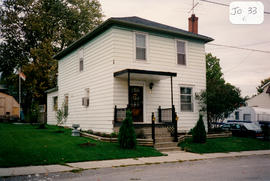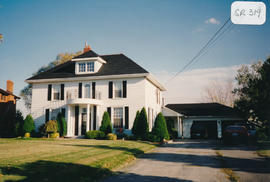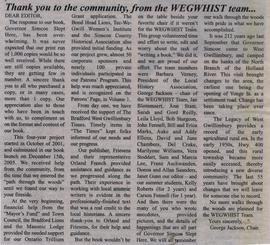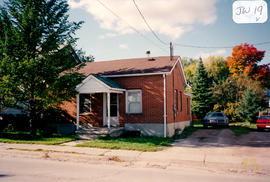- CA BWGPL GJ-HB-2017-03-25-04
- Stuk
- 1995
Part of George Jackson fonds
The frame building located at 38 and 40 Holland St. East was bought many years ago by Mr. McWilliams. He remodeled the structure and put the entrance for the upstairs apartment on the east side (42 Holland St. E.). He died many years ago and Mrs. McWilliams (a sister of William Hirlehey) and her son Bill lived in the apartment. Bill worked on the marsh and in a hockey stick factory. There were two shops downstairs. Joe Scotto barbered at 40 Holland St. East (on the east side of the building) for a number of years before moving across the street to “Rusty” Worfolk’s property at 27 Holland St. East. There was a shoemaker and leather shop for years at 38 Holland St. East (on the west side of the building). There have been several other businesses here including Joyce’s Curio Shoppe (as seen in this photo taken in 1995). (1, 2)
Zonder titel









